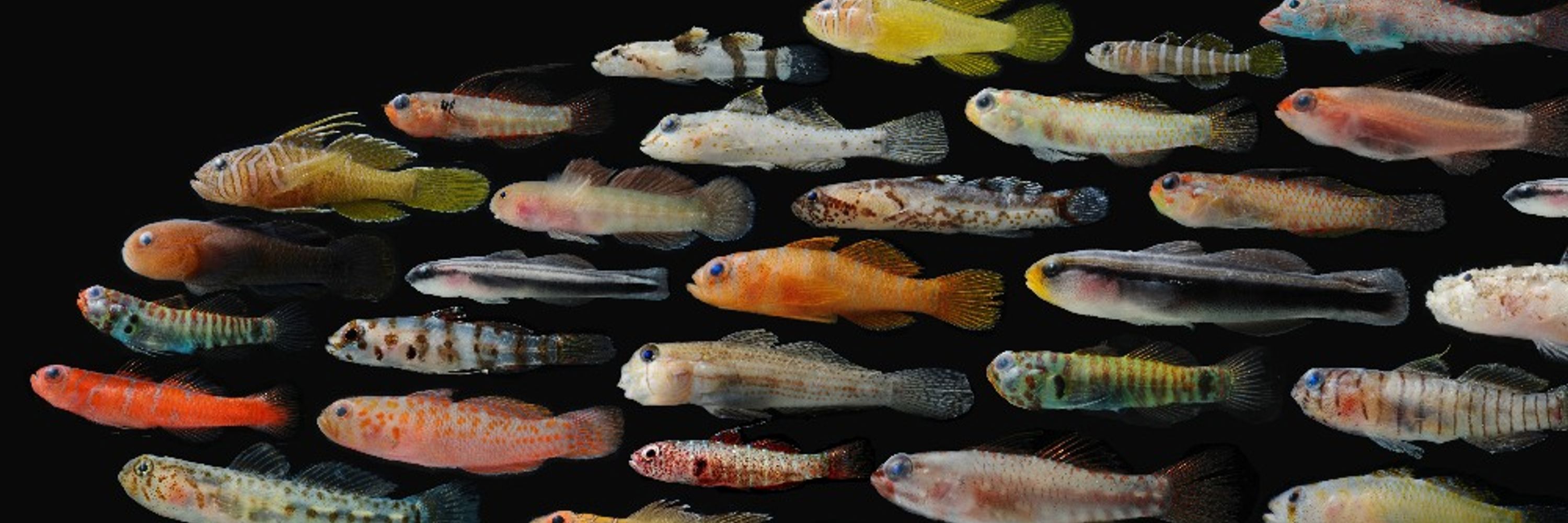
Simon J. Brandl
@gobyone.bsky.social
Assistant Professor at UT Austin's Marine Science Institute | Fishes, functions, and marine ecosystems | he/his | Views are my own
www.fishandfunctions.com 🐡📉
www.fishandfunctions.com 🐡📉
Pinned
Simon J. Brandl
@gobyone.bsky.social
· Jun 6
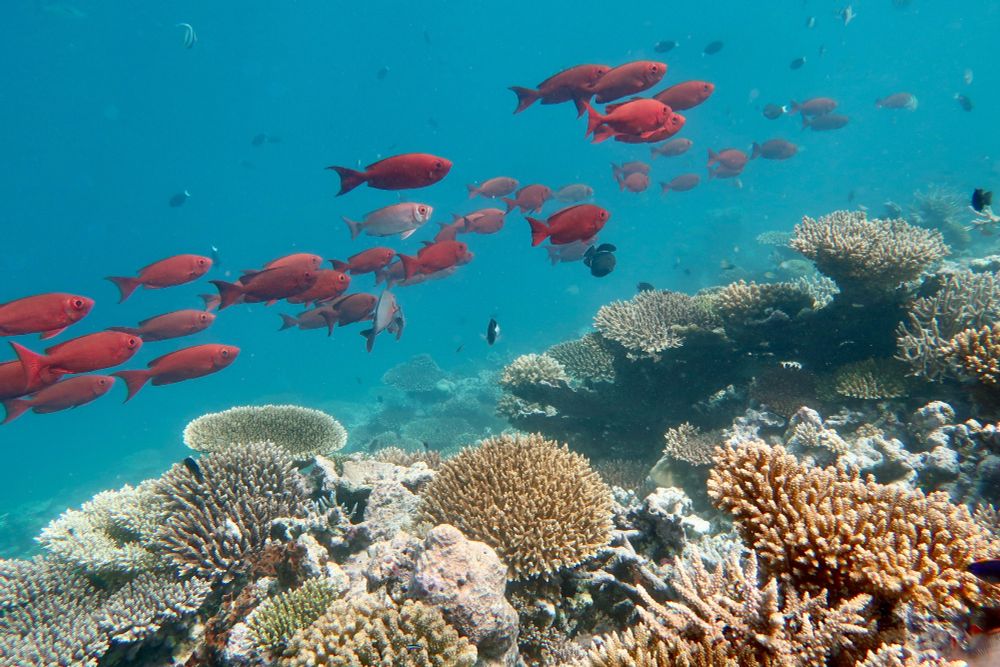
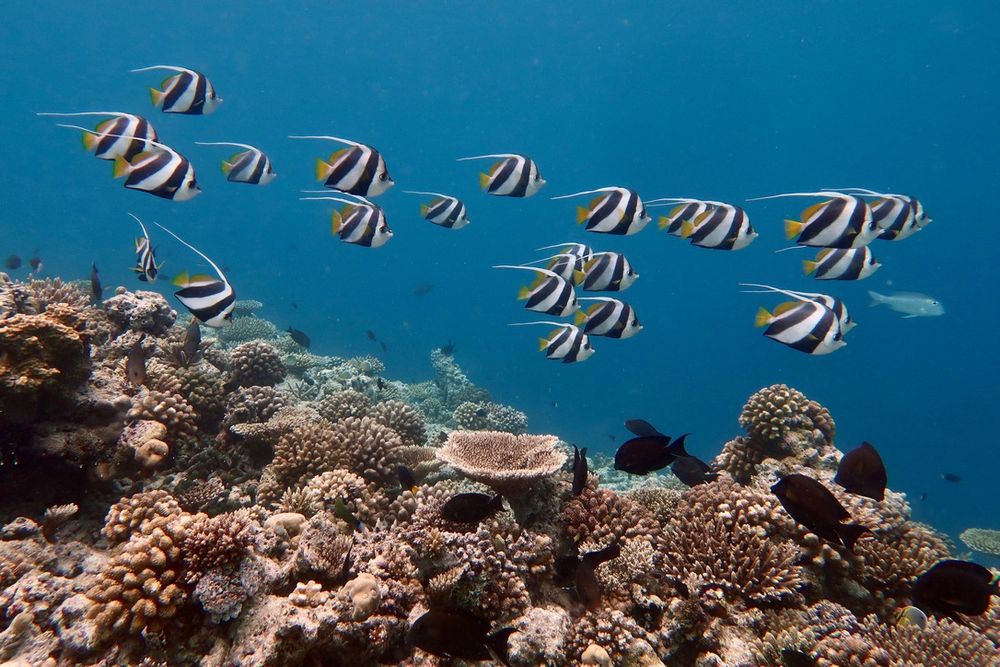
Heard of "Darwin's paradox"? It refers to Charles Darwin's observation that coral reefs are wildly productive despite occurring in nutrient-poor tropical oceans. Reefs are, so the story goes, oases in marine deserts 🏝️...
Turns out that 2/3 of these assertions are very wrong...
🌐
🦑🧪
🧵⬇️
Turns out that 2/3 of these assertions are very wrong...
🌐
🦑🧪
🧵⬇️
Community structure and microhabitat associations of cryptobenthic fishes in Veracruz, Mexico
First PhD-paper by @r-higueras.bsky.social, exploring the tiny fish communities on reefs off the coast of her hometown 🥹
link.springer.com/article/10.1...
First PhD-paper by @r-higueras.bsky.social, exploring the tiny fish communities on reefs off the coast of her hometown 🥹
link.springer.com/article/10.1...


October 20, 2025 at 6:34 AM
Community structure and microhabitat associations of cryptobenthic fishes in Veracruz, Mexico
First PhD-paper by @r-higueras.bsky.social, exploring the tiny fish communities on reefs off the coast of her hometown 🥹
link.springer.com/article/10.1...
First PhD-paper by @r-higueras.bsky.social, exploring the tiny fish communities on reefs off the coast of her hometown 🥹
link.springer.com/article/10.1...
Reposted by Simon J. Brandl
Did someone say resting fish face?
The #LonghornCowfish is easy to spot with its bright yellow color and the signature horns jutting from its head. But those horns aren’t just for style — scientists think they evolved to make this little cowfish a mouthful most predators can’t swallow.
The #LonghornCowfish is easy to spot with its bright yellow color and the signature horns jutting from its head. But those horns aren’t just for style — scientists think they evolved to make this little cowfish a mouthful most predators can’t swallow.

August 31, 2025 at 6:29 PM
Did someone say resting fish face?
The #LonghornCowfish is easy to spot with its bright yellow color and the signature horns jutting from its head. But those horns aren’t just for style — scientists think they evolved to make this little cowfish a mouthful most predators can’t swallow.
The #LonghornCowfish is easy to spot with its bright yellow color and the signature horns jutting from its head. But those horns aren’t just for style — scientists think they evolved to make this little cowfish a mouthful most predators can’t swallow.
Reposted by Simon J. Brandl
It's that time again :>
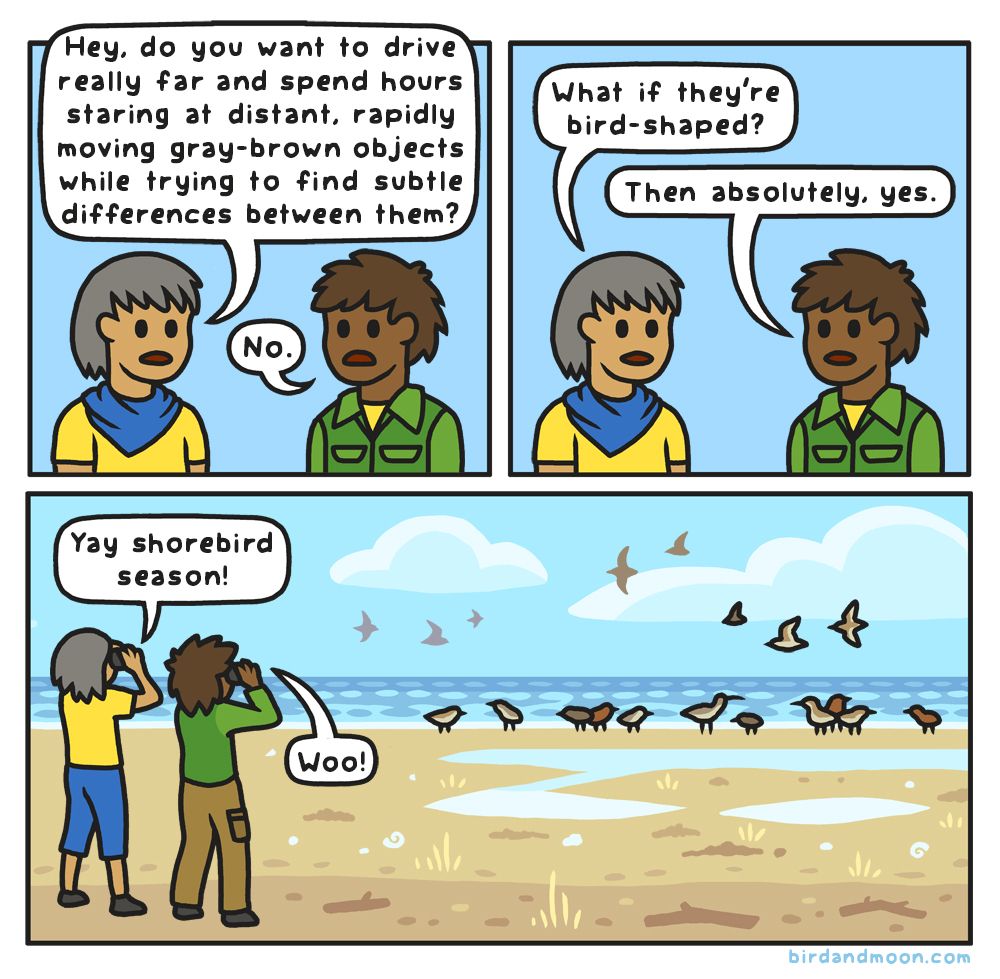
August 11, 2025 at 2:50 PM
It's that time again :>
Reposted by Simon J. Brandl
New study from @wcs.org and partners document 85% decline in abundance of Nassau grouper at their spawning site at Glover's Reef over 20 years, moving the population to local extirpation. Read more from Coral Reefs: link.springer.com/article/10.1...
Photo (c) Connor Holland/Ocean Image Bank
Photo (c) Connor Holland/Ocean Image Bank

August 5, 2025 at 10:16 PM
New study from @wcs.org and partners document 85% decline in abundance of Nassau grouper at their spawning site at Glover's Reef over 20 years, moving the population to local extirpation. Read more from Coral Reefs: link.springer.com/article/10.1...
Photo (c) Connor Holland/Ocean Image Bank
Photo (c) Connor Holland/Ocean Image Bank
Reposted by Simon J. Brandl
1 of #365Minerals 🧪⚒️
Quetzalcoatlite:
- Named after Quetzalcoatl, an Aztec and Toltec god of the sea, due to its sea-blue colour
- Forms in the oxidised zone of tellurium-bearing hydrothermal deposits #minerals
- This below is a co-type specimen (one of the specimens used to define the species)
Quetzalcoatlite:
- Named after Quetzalcoatl, an Aztec and Toltec god of the sea, due to its sea-blue colour
- Forms in the oxidised zone of tellurium-bearing hydrothermal deposits #minerals
- This below is a co-type specimen (one of the specimens used to define the species)
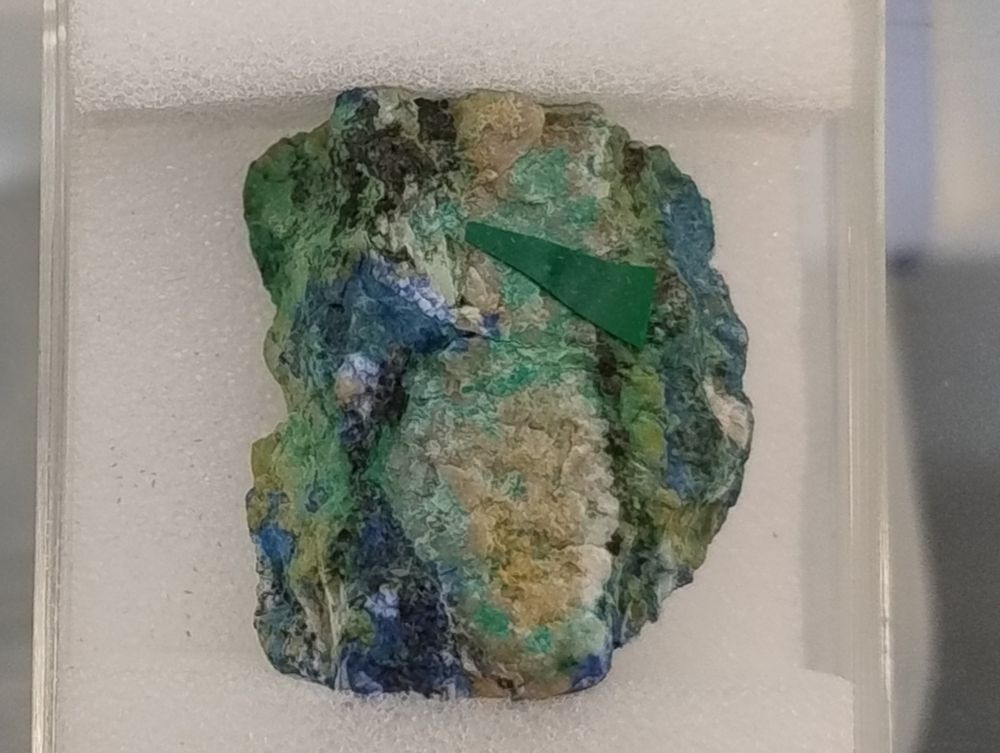
January 1, 2025 at 9:43 AM
1 of #365Minerals 🧪⚒️
Quetzalcoatlite:
- Named after Quetzalcoatl, an Aztec and Toltec god of the sea, due to its sea-blue colour
- Forms in the oxidised zone of tellurium-bearing hydrothermal deposits #minerals
- This below is a co-type specimen (one of the specimens used to define the species)
Quetzalcoatlite:
- Named after Quetzalcoatl, an Aztec and Toltec god of the sea, due to its sea-blue colour
- Forms in the oxidised zone of tellurium-bearing hydrothermal deposits #minerals
- This below is a co-type specimen (one of the specimens used to define the species)
Reposted by Simon J. Brandl
New manta ray new manta ray NEW MANTA RAY!
𝑀𝑜𝑏𝑢𝑙𝑎 𝑦𝑎𝑟𝑎, a new cryptic species of Manta Ray, is described from the Western Atlantic Ocean. The existence of an undescribed manta ray species has been suggested for over 15 years and is now formally described. 🐟🧪
link.springer.com/article/10.1...
link.springer.com/article/10.1...

An integrative taxonomy investigation unravels a cryptic species of Mobula Rafinesque, 1810 (Mobulidae, Myliobatiformes), from the Atlantic Ocean - Environmental Biology of Fishes
Manta and devil rays comprise a vulnerable animal group with a complex nomenclatural history and a somewhat unresolved taxonomy. The existence of a putative undescribed species of manta ray in the Atl...
link.springer.com
July 23, 2025 at 12:37 PM
New manta ray new manta ray NEW MANTA RAY!
Phenomenal first PhD paper by the marvelous @lljeannot.bsky.social – check it out folks, it has birds, coral reefs, and tiny fish!
New paper out in Proceedings B! 🔊
Seabirds' impacts on reefs extends even to some of its tiniest inhabitants - cryptobenthic reef fishes 🐠
Near colonies, these fishes assimilate seabird nutrients (💩), grow larger 📈 & more at: royalsocietypublishing.org/doi/10.1098/...
@royalsocietypublishing.org
Seabirds' impacts on reefs extends even to some of its tiniest inhabitants - cryptobenthic reef fishes 🐠
Near colonies, these fishes assimilate seabird nutrients (💩), grow larger 📈 & more at: royalsocietypublishing.org/doi/10.1098/...
@royalsocietypublishing.org
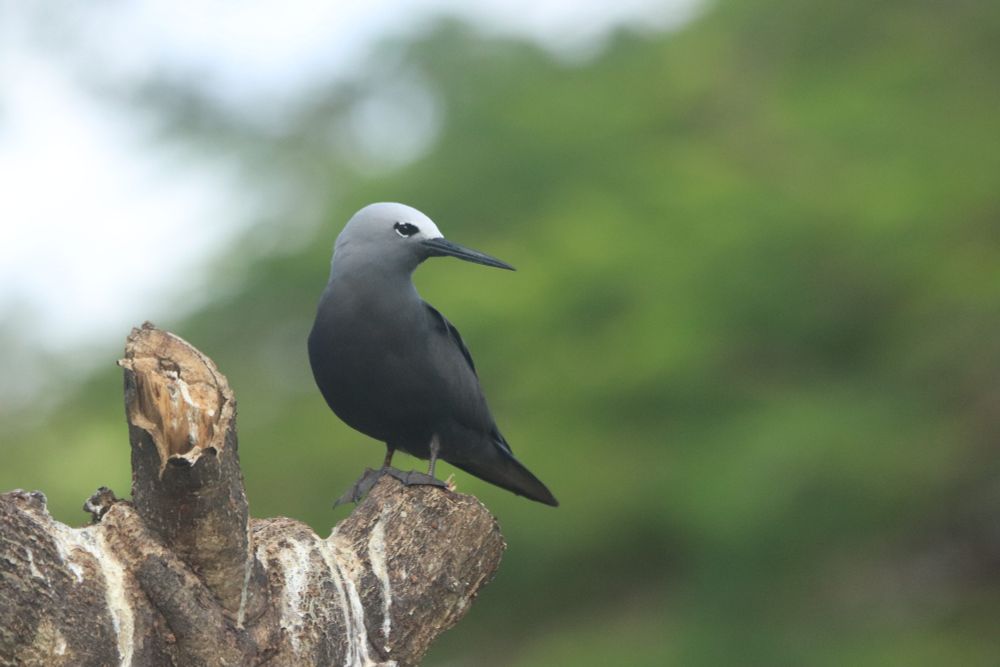
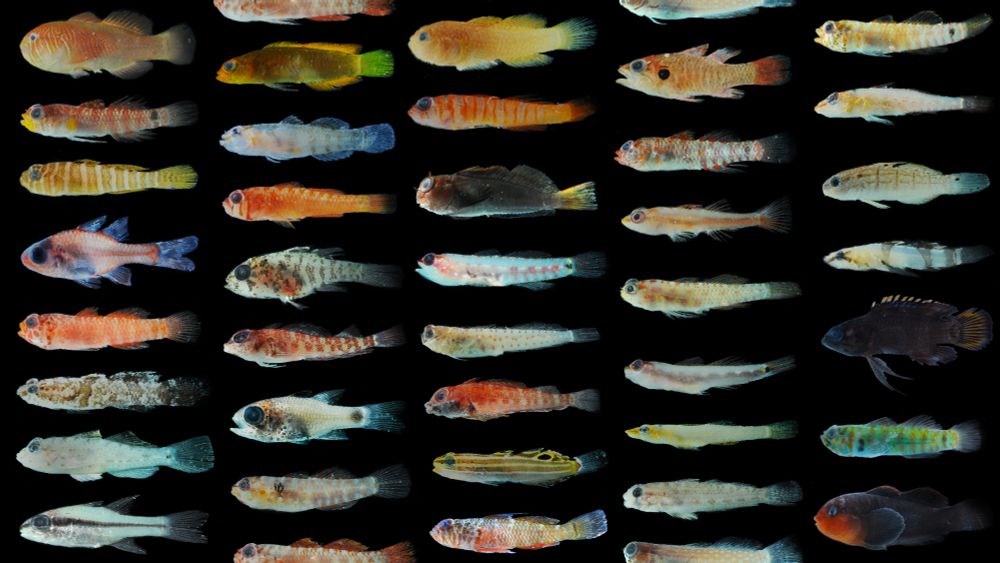
July 11, 2025 at 3:11 PM
Phenomenal first PhD paper by the marvelous @lljeannot.bsky.social – check it out folks, it has birds, coral reefs, and tiny fish!
Reposted by Simon J. Brandl
🐠🦈 Just out: In this paper we ask "How has reef trophic structure changed since humans started removing predatory fishes from Caribbean coral reefs?".
www.pnas.org/doi/10.1073/...
Illustrations @cookedillustrations.com
www.pnas.org/doi/10.1073/...
Illustrations @cookedillustrations.com
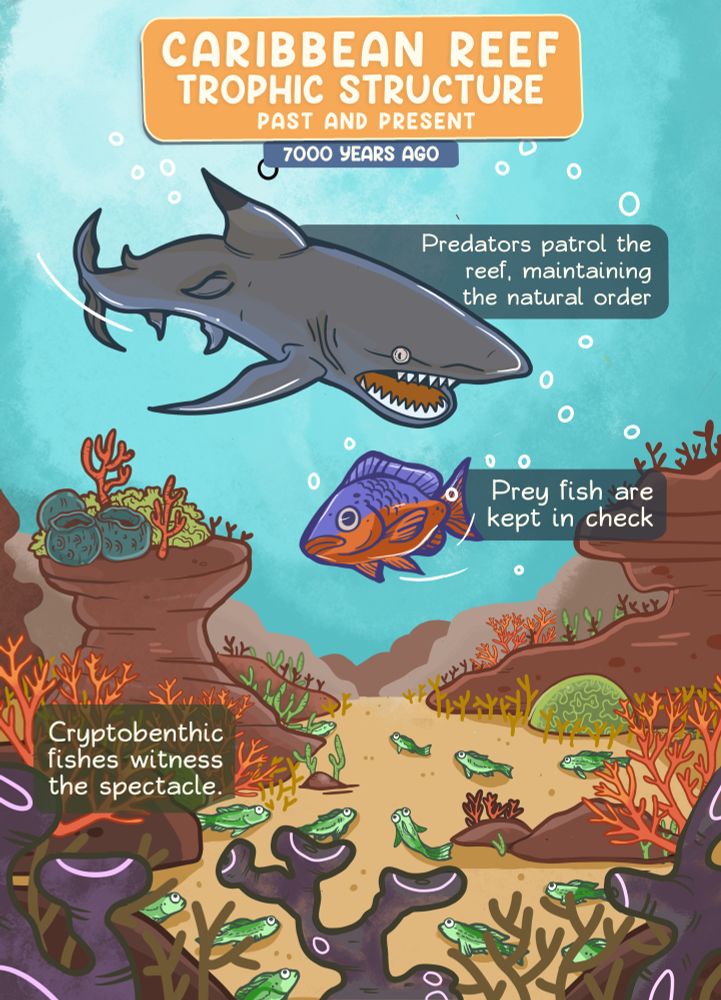
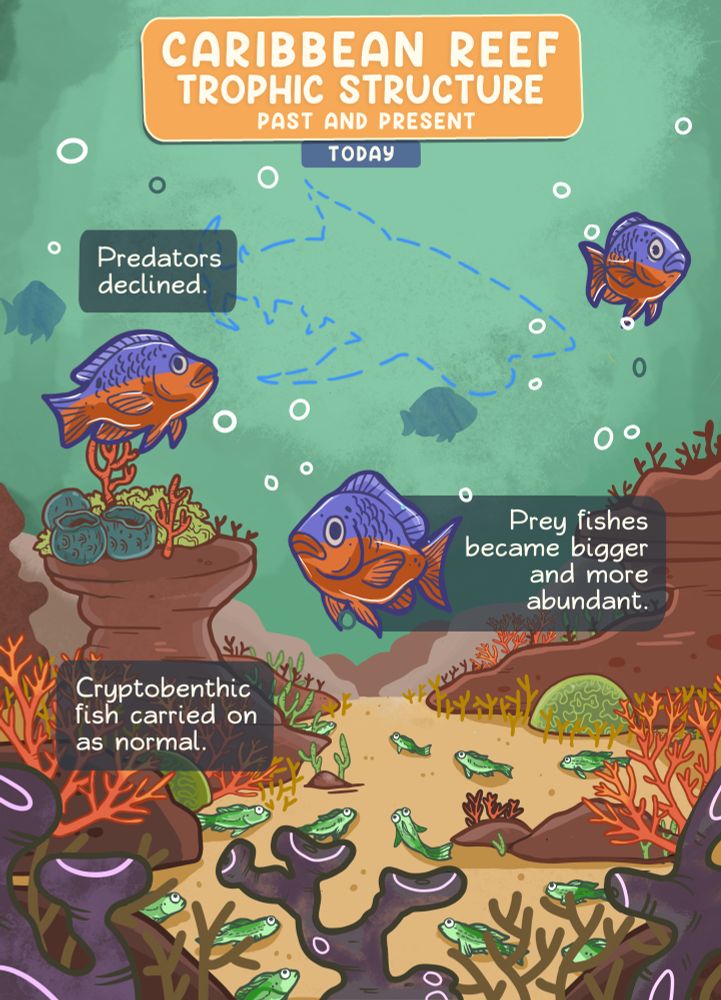
July 1, 2025 at 6:40 PM
🐠🦈 Just out: In this paper we ask "How has reef trophic structure changed since humans started removing predatory fishes from Caribbean coral reefs?".
www.pnas.org/doi/10.1073/...
Illustrations @cookedillustrations.com
www.pnas.org/doi/10.1073/...
Illustrations @cookedillustrations.com
Reposted by Simon J. Brandl
New research challenges the long-held belief that coral reefs are “oases” in marine deserts. While among the world’s most productive ecosystems, their existence in nutrient-deprived oceans is the exception rather than the rule. @gobyone.bsky.social @utmsi.bsky.social
cns.utexas.edu/news/researc...
cns.utexas.edu/news/researc...
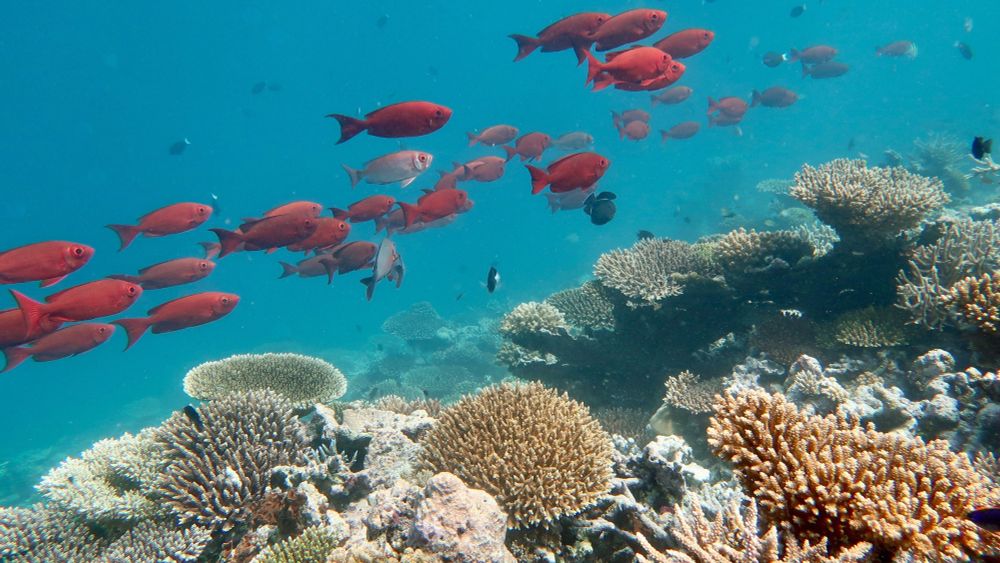
Idea of Coral Reefs as Oases in Marine Deserts May Be Mistaken
New research from Simon Brandl at The University of Texas at Austin challenges a long-held belief about coral reefs.
cns.utexas.edu
June 10, 2025 at 7:28 PM
New research challenges the long-held belief that coral reefs are “oases” in marine deserts. While among the world’s most productive ecosystems, their existence in nutrient-deprived oceans is the exception rather than the rule. @gobyone.bsky.social @utmsi.bsky.social
cns.utexas.edu/news/researc...
cns.utexas.edu/news/researc...
Reposted by Simon J. Brandl
Our new paper on the historical and scientific basis of Darwin’s ‘coral reef paradox’ is out @currentbiology.bsky.social! Summary below by @gobyone.bsky.social.
Also with @paulinenarvaez.bsky.social
@oclaripv.bsky.social
and Vale Parravicini!
Free-access link:
authors.elsevier.com/a/1lDFm3QW8S...
Also with @paulinenarvaez.bsky.social
@oclaripv.bsky.social
and Vale Parravicini!
Free-access link:
authors.elsevier.com/a/1lDFm3QW8S...
June 7, 2025 at 10:37 AM
Our new paper on the historical and scientific basis of Darwin’s ‘coral reef paradox’ is out @currentbiology.bsky.social! Summary below by @gobyone.bsky.social.
Also with @paulinenarvaez.bsky.social
@oclaripv.bsky.social
and Vale Parravicini!
Free-access link:
authors.elsevier.com/a/1lDFm3QW8S...
Also with @paulinenarvaez.bsky.social
@oclaripv.bsky.social
and Vale Parravicini!
Free-access link:
authors.elsevier.com/a/1lDFm3QW8S...
Cool description of seven miniature fish species from the Triassic that may be similar to modern day cryptobenthics. Apparently they were all over the Tethys Sea 240 million years ago, measuring in at a whopping 4cm adult body size 🥹 Scale bar in 📷 is 5mm!
linkinghub.elsevier.com/retrieve/pii...
linkinghub.elsevier.com/retrieve/pii...
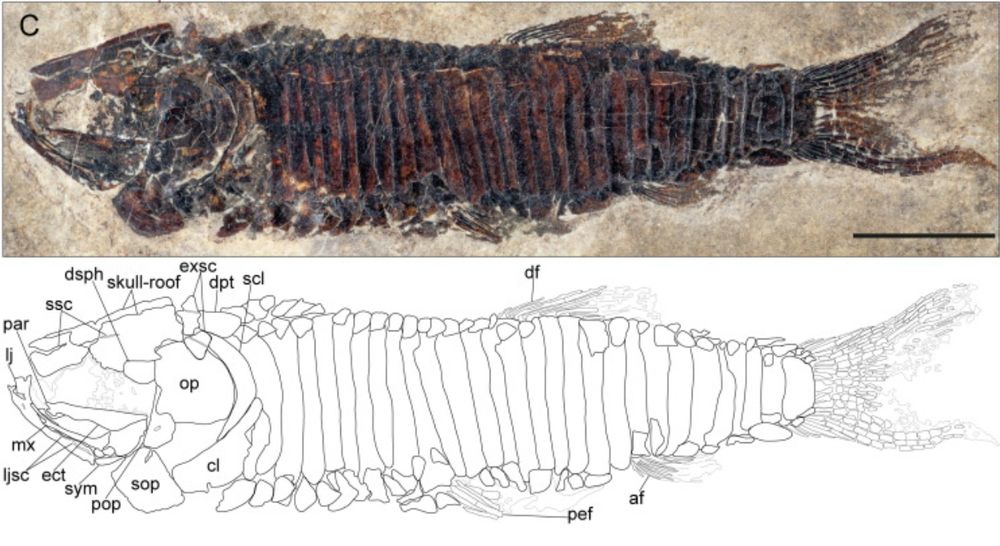
June 10, 2025 at 1:28 PM
Cool description of seven miniature fish species from the Triassic that may be similar to modern day cryptobenthics. Apparently they were all over the Tethys Sea 240 million years ago, measuring in at a whopping 4cm adult body size 🥹 Scale bar in 📷 is 5mm!
linkinghub.elsevier.com/retrieve/pii...
linkinghub.elsevier.com/retrieve/pii...
Reposted by Simon J. Brandl
Global Patterns and Drivers of Freshwater Fish Extinctions: Can We Learn From Our Losses?
🔗 buff.ly/1ljgy5X
🔗 buff.ly/1ljgy5X

June 8, 2025 at 12:25 PM
Global Patterns and Drivers of Freshwater Fish Extinctions: Can We Learn From Our Losses?
🔗 buff.ly/1ljgy5X
🔗 buff.ly/1ljgy5X
Heard of "Darwin's paradox"? It refers to Charles Darwin's observation that coral reefs are wildly productive despite occurring in nutrient-poor tropical oceans. Reefs are, so the story goes, oases in marine deserts 🏝️...
Turns out that 2/3 of these assertions are very wrong...
🌐
🦑🧪
🧵⬇️
Turns out that 2/3 of these assertions are very wrong...
🌐
🦑🧪
🧵⬇️


June 6, 2025 at 1:32 PM
Heard of "Darwin's paradox"? It refers to Charles Darwin's observation that coral reefs are wildly productive despite occurring in nutrient-poor tropical oceans. Reefs are, so the story goes, oases in marine deserts 🏝️...
Turns out that 2/3 of these assertions are very wrong...
🌐
🦑🧪
🧵⬇️
Turns out that 2/3 of these assertions are very wrong...
🌐
🦑🧪
🧵⬇️
Reposted by Simon J. Brandl
☀️🌏🇮🇹High pressure conditions have cleaned the sky almost everywhere over a wonderfully green #Italy and its islands, reaching 30°C in multiple regions for the first time in 2025. In the meanwhile a heavy saharahn dust event is about to touch the SW coast of Sardegna.⬇️View of Sentinel3 on May 2.
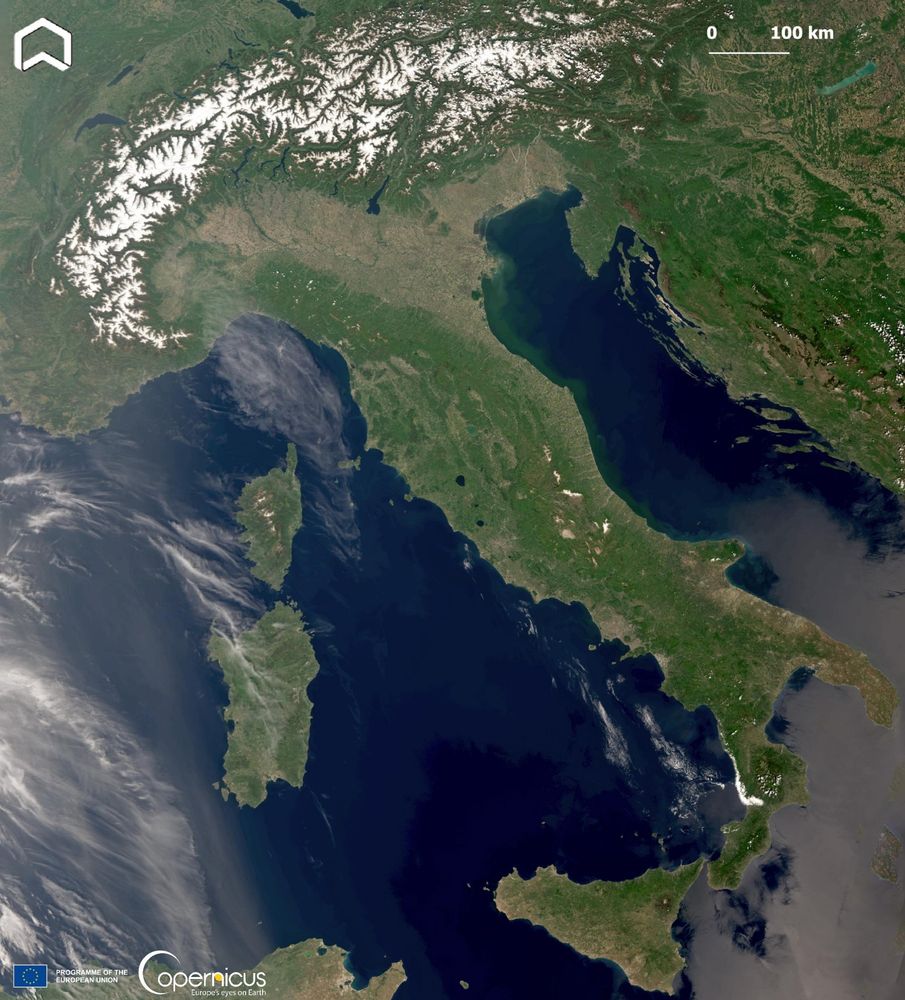
May 3, 2025 at 10:36 AM
☀️🌏🇮🇹High pressure conditions have cleaned the sky almost everywhere over a wonderfully green #Italy and its islands, reaching 30°C in multiple regions for the first time in 2025. In the meanwhile a heavy saharahn dust event is about to touch the SW coast of Sardegna.⬇️View of Sentinel3 on May 2.
In good tradition, here are a few tiny fishes with bunny ears 🐰

April 18, 2025 at 5:07 PM
In good tradition, here are a few tiny fishes with bunny ears 🐰
Reposted by Simon J. Brandl
I am pleased to announce The Macroevolution Lab at Ohio State opens this August! We will be housed in the Museum of Biological Diversity 🐟🐠🐡

April 14, 2025 at 3:38 PM
I am pleased to announce The Macroevolution Lab at Ohio State opens this August! We will be housed in the Museum of Biological Diversity 🐟🐠🐡
Reposted by Simon J. Brandl
When thinking of the 'model' planktivore on reefs, fusiliers come to mind - their fusiform bodies, forked caudal fins, and large eyes appear built for the job. But are these traits common among most plankton-feeding reef fishes? 🐟
🔗 The story is more nuanced than we thought: doi.org/10.1007/s111...
🔗 The story is more nuanced than we thought: doi.org/10.1007/s111...
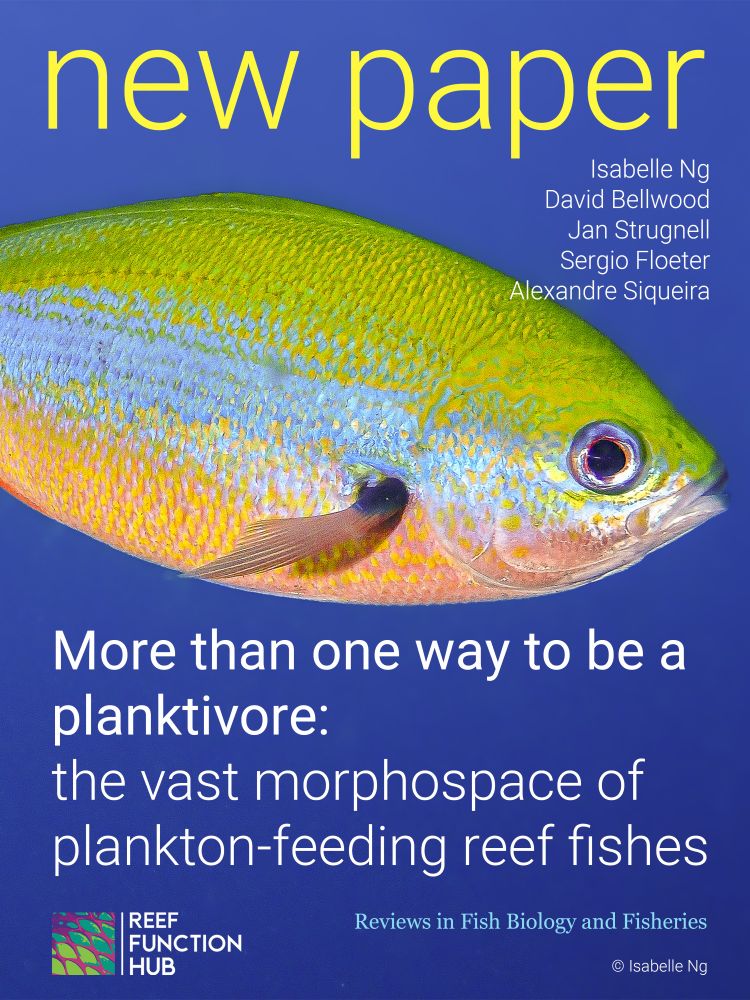
April 14, 2025 at 1:00 PM
When thinking of the 'model' planktivore on reefs, fusiliers come to mind - their fusiform bodies, forked caudal fins, and large eyes appear built for the job. But are these traits common among most plankton-feeding reef fishes? 🐟
🔗 The story is more nuanced than we thought: doi.org/10.1007/s111...
🔗 The story is more nuanced than we thought: doi.org/10.1007/s111...
What do dolphins, toadfishes, and snapping shrimp have in common? They all go quiet when disaster strikes. We show that historic rainfalls in South Texas silenced an otherwise noisy estuary for several months, suggesting a sustained loss of ecosystem functioning.
👉 link.springer.com/article/10.1...
👉 link.springer.com/article/10.1...


April 11, 2025 at 4:05 PM
What do dolphins, toadfishes, and snapping shrimp have in common? They all go quiet when disaster strikes. We show that historic rainfalls in South Texas silenced an otherwise noisy estuary for several months, suggesting a sustained loss of ecosystem functioning.
👉 link.springer.com/article/10.1...
👉 link.springer.com/article/10.1...
Reposted by Simon J. Brandl
Fish for sale in Sunday morning in Raiatea, French Polynesia
I was surprised to see titan trigger fish for sale
I didn't think people ate those
I was surprised to see titan trigger fish for sale
I didn't think people ate those

March 30, 2025 at 7:27 PM
Fish for sale in Sunday morning in Raiatea, French Polynesia
I was surprised to see titan trigger fish for sale
I didn't think people ate those
I was surprised to see titan trigger fish for sale
I didn't think people ate those
Reposted by Simon J. Brandl
Thank you for this contribution to Ecology!🐟
In 2019, we showed that tiny, bottom-dwelling fish can fuel coral reef energy fluxes. In our new paper, we reveal a dramatic dichotomy in their functional role across coral reef habitats separated by a few 100 meters.
esajournals.onlinelibrary.wiley.com/doi/full/10....
@esajournals.bsky.social
esajournals.onlinelibrary.wiley.com/doi/full/10....
@esajournals.bsky.social

March 24, 2025 at 8:13 PM
Thank you for this contribution to Ecology!🐟
In 2019, we showed that tiny, bottom-dwelling fish can fuel coral reef energy fluxes. In our new paper, we reveal a dramatic dichotomy in their functional role across coral reef habitats separated by a few 100 meters.
esajournals.onlinelibrary.wiley.com/doi/full/10....
@esajournals.bsky.social
esajournals.onlinelibrary.wiley.com/doi/full/10....
@esajournals.bsky.social

March 24, 2025 at 6:34 PM
In 2019, we showed that tiny, bottom-dwelling fish can fuel coral reef energy fluxes. In our new paper, we reveal a dramatic dichotomy in their functional role across coral reef habitats separated by a few 100 meters.
esajournals.onlinelibrary.wiley.com/doi/full/10....
@esajournals.bsky.social
esajournals.onlinelibrary.wiley.com/doi/full/10....
@esajournals.bsky.social
Incredibly informative & accessible review by @tjnear.bsky.social and Chris Thacker on the systematics and biology of acanthopterygian fish clades. Treated myself to a quick read this morning and amazed that Blenniiformes and Atheriniformes are sister lineages! 🤯
link.springer.com/article/10.1...
link.springer.com/article/10.1...

March 14, 2025 at 2:27 PM
Incredibly informative & accessible review by @tjnear.bsky.social and Chris Thacker on the systematics and biology of acanthopterygian fish clades. Treated myself to a quick read this morning and amazed that Blenniiformes and Atheriniformes are sister lineages! 🤯
link.springer.com/article/10.1...
link.springer.com/article/10.1...
Fri-yay goby appreciation post: this is the Mesoamerican Sponge Goby Elacatinus colini, which spends its entire adult life inside some random sponge in a warm, cozy coral reef lagoon. Sponges have notoriously poor WiFi, so he persists in blissful ignorance... 🥹

March 7, 2025 at 5:08 PM
Fri-yay goby appreciation post: this is the Mesoamerican Sponge Goby Elacatinus colini, which spends its entire adult life inside some random sponge in a warm, cozy coral reef lagoon. Sponges have notoriously poor WiFi, so he persists in blissful ignorance... 🥹
Reposted by Simon J. Brandl
@lionelhenry.bsky.social and I are so excited to finally announce Air - an extremely fast R code formatter! 🎉
With Air, you'll never need to worry about styling your #rstats code ever again. All you need to do is save, and Air takes care of the rest.
www.tidyverse.org/blog/2025/02...
With Air, you'll never need to worry about styling your #rstats code ever again. All you need to do is save, and Air takes care of the rest.
www.tidyverse.org/blog/2025/02...

Air, an extremely fast R formatter
We are thrilled to announce Air, a new R formatter.
www.tidyverse.org
February 21, 2025 at 3:10 PM
@lionelhenry.bsky.social and I are so excited to finally announce Air - an extremely fast R code formatter! 🎉
With Air, you'll never need to worry about styling your #rstats code ever again. All you need to do is save, and Air takes care of the rest.
www.tidyverse.org/blog/2025/02...
With Air, you'll never need to worry about styling your #rstats code ever again. All you need to do is save, and Air takes care of the rest.
www.tidyverse.org/blog/2025/02...
Reposted by Simon J. Brandl
Animal agency indeed! "..the role of animals in shaping Earth's landscapes is much more significant that previously recognised. From beavers creating wetlands to ants building mounds of soil, these diverse natural processes are crucial, yet we risk losing them as biodiversity declines."
“Nearly 30% of the identified species are rare, endemic, or threatened, meaning vital geomorphic processes could cease before their full significance is understood.”
🌱🐋🧪🌎 #STS
🌱🐋🧪🌎 #STS

Animals as architects of Earth: First global study reveals their surprising impact
Animals are not just inhabitants of the natural world -- they are its architects. A new study has revealed how hundreds of species shape the landscapes we depend on, from vast termite mounds visible f...
www.sciencedaily.com
February 21, 2025 at 8:00 AM
Animal agency indeed! "..the role of animals in shaping Earth's landscapes is much more significant that previously recognised. From beavers creating wetlands to ants building mounds of soil, these diverse natural processes are crucial, yet we risk losing them as biodiversity declines."

